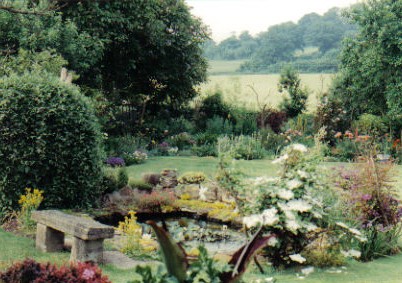The first few scenes in my book The Worst Country in the World are set in a cottage in the village of Fiddleford, in Dorset, where my ancestress Mary Pitt was living, with her five children, when she made the momentous decision to emigrate to New South Wales in 1801.
May Cottage is a Grade II listed building and it still exists. However when I tried to visit it back in 2008 the current owners would not allow me past the back gate. All I had to go on, apart from official records, was the testimony, and some photos and floor plans, from a previous owner, the lovely – and now late – Olive Hall.
I knew May Cottage as a picture-postcard, two-storey thatched cottage with pink-washed walls. Two living rooms and a kitchen down, two bedrooms up. Not a lot of space for a family of six.

Then a few weeks ago the current owner, Phil Leahy-Harland, contacted me through the Pitt family history website to say he was restoring the property to its original glory and I was welcome to visit any time. For the first time since I set out on my family history adventure I was able to actually set foot inside my ancestral home – which, incidentally, my family never owned – and patch together some kind of biography of May Cottage, thus:
The house was originally built in 1684 and was known as the ‘Trout Alehouse’. It was leased to Mary’s husband Robert Pitt in 1766, and it was licensed up until 1770, the year he married Mary and when, presumably, it changed its name to May Cottage. The cottage was owned by the local squire, Lord Pitt Rivers, and at the time of Mary’s emigration she and her five children were living there ‘rent-free’ – presumably because the family was on hard times; hence their emigration to make their home in a penal colony.
Up until 1968 the house was unmodernised. The elderly couple who owned it did not use the upper floor; they turned the smaller of the two rooms downstairs into a bedroom and showered – with cold water – in the kitchen. Their toilet was an ‘elsan’ outside the back door. Olive and her husband added a bathroom on the upper level, and at some point the two downstairs rooms became one. An extension was added in 1992.

May Cottage with 1992 extension 
Side view of extension

Olive Hall’s garden 
Olive’s shed 
Aerial short of May Cottage
May Cottage might look immaculate from the outside but according to Phil it was almost falling down when he and his wife Sam bought it in 2015. The garden was a jungle and none of the previous restorations had been done properly. Gaps had been filled with Blu-tak, beams that had split had not been replaced, the walls and ceiling had moved several inches and were bulging in places. Fortunately for anyone who cares about these things, and especially for the Pitt family, Phil is now spending every spare moment restoring the place, with huge and painstaking care.

So was it what I expected?
Well the first thing that struck me was its size, and how Mary and her five children fitted into two bedrooms. The ceiling beams on which her cousin and patron George Matcham hit his head (in my book) isn’t quite as low as I had claimed, but the stairs leading to the upper floor were every bit as steep and uneven as I had been led to believe. Like all old cottages the windows are small (see below), so the place is dark, as I had correctly imagined.

Downstairs ‘parlour’ 
Main bedroom 
Second bedroom
Thrillingly, Phil discovered, carved into the brickwork, the initials ‘W P’ – not once, but three times. Who was ‘WP’? Well he could be anyone, but I like to imagine he was Mary’s eldest son William Pitt (who vanished to America and subsequent oblivion).

Original outer back door 
Interior wall showing original lath and plaster, and wallpaper
They have also discovered, in the hedgerows and in the skirting board, various items such as a fragment of an 18th century coffee cup and a one penny coin dated 1797, both of which may have belonged to Mary.

Fragment of 18th century coffee cup. 
The head of King George III. Made of copper and surprisingly heavy. 
The gap in the skirting board where some of the treasure was found

Original well 
Garden now 
Garden through upper window
We are lucky, the Pitt family, that so many of the places our ancestors lived in – both in England and Australia – not only still exist but have been or are in the process of being properly restored. It warms the cockles of my heart to think that Mary and her descendants still exist in the fabric of the houses they lived in and the cups they may have drank out of.
Patsy Trench
August 2020




